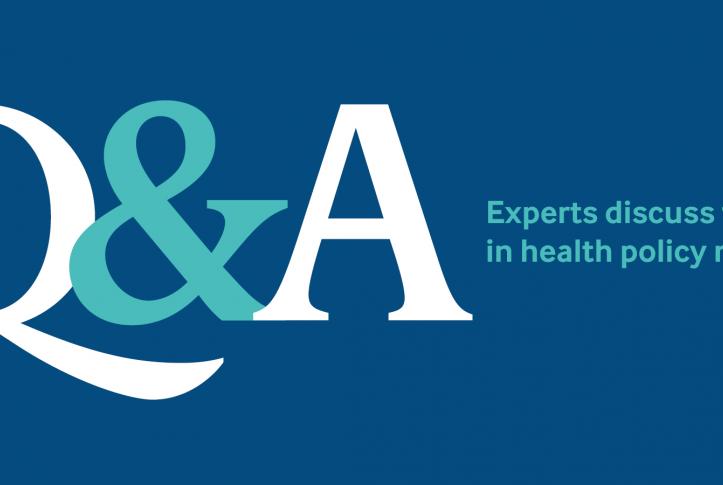|

Project ECHO was developed in 2003 by the University of New Mexico’s Sanjeev Arora, M.D., a gastroenterologist in the state’s only academic medical center, who wanted to find a way to help the many patients who faced long waits or had to travel long distances to see him. In Project ECHO clinics, medical specialists like Arora hold videoconferences with primary care providers, offering them guidance and support to treat patients with diseases such as hepatitis C, diabetes, and epilepsy in their communities. Evidence indicates this kind of support can enable primary care providers to be as effective as specialists in managing certain conditions. Since 2003, the ECHO model has spread to more than 70 different sites around the world. At Baylor College of Medicine in Houston, Texas, medical staff work with community providers in Texas, Louisiana, Mississippi, North Carolina, and Tennessee. We spoke with Norman Sussman, M.D., a hepatologist who launched Baylor’s program in 2014. |
How did you become interested in the Project ECHO approach?
Dr. Sussman: I saw it firsthand when I was visiting the ECHO replication site at the University of Washington. I was struck by its efficiency: a single expert was able to direct some 50 community providers to up their game. In turn, these community-based surrogates could manage treatment for hundreds of patients who would otherwise likely never get treated.
Up until that point, I had considered telemedicine to be ineffective for addressing access. The way I saw it, if I gave up a clinic slot to see a patient via video and the video visit wasn’t as good as a face-to-face visit, I would deliver less effective care without expanding capacity. In contrast, ECHO creates capacity where it hadn’t existed.
It also reduces the travel burdens on patients who can be safely and effectively treated in primary care practices. When patients get referred to my medical center, many don’t come. Lack of access isn’t only about distance. If you have no resources and you live in downtown Houston, getting to our medical center can be just as difficult as getting here from El Paso, about 750 miles away.
How have you used the Project ECHO model at Baylor?
We began with hepatitis C because of the magnitude of the problem and improvements in antiviral agents. When Dr. Arora started teaching primary care physicians how to treat the condition, it took a tremendous amount of effort. But we’ve since moved into an era where the drugs are so much better that our providers are getting about a 100 percent success rate. I can’t think of any other area of medicine where there is such an instant reward. We now run a weekly hepatitis C clinic. We have helped to treat over 400 patients and trained providers who have treated up to 10 times that amount. I doubt many physicians in family practice thought they would be treating hepatitis C, let alone doing it so skillfully, when they graduated from medical school.
In 2015 we started offering cardiology clinics on topics such as hypertension, hyperlipidemia, congestive heart failure, and cardiac issues related to obesity. Even though there are cardiologists in most communities, internal medicine providers need some level of skill in dealing with these issues.
Our most adventurous project is aimed at increasing access to organ transplants in underserved communities. We’ve identified community providers who can evaluate their patients locally and present them to a medical review board at a transplant center. In this way, patients can be vetted before they make the inconvenient and expensive journey to a specialty center.
How have you enlisted primary care physicians?
Getting people isn’t always easy. I offer them the opportunity to expand their skill set. Some say no, but some want to be a resource for their patients, their communities, and their colleagues. We have reached out to people in practices and hospitals.
For our house staff programs, we offer sessions on cardiology, infectious diseases, and general hepatology. We hope that some of the trainees will continue to work in underserved areas after graduation and will recognize Project ECHO as a way to engage in lifelong learning and remain in a dynamic professional network. Remaining connected could reduce professional turnover and burnout in remote practice locations.
How have you been able to fund Project ECHO, given that it’s not a service that’s reimbursed by insurers?
Luckily for us, our medical center has been very supportive and has shared a portion of delivery system reform incentive payment (DSRIP) funding to help pay for the hepatitis clinics. Clinic leaders have volunteered their time. Sustainability will be an issue when DSRIP funding ends.
Primary care providers participate because they are dedicated practitioners; they’re not getting paid to do this. We hope that future government and private funding will reward community providers for delivering this extraordinary level of care—something the passage of the ECHO Act makes more likely.
If the new HHS Secretary were to call you to ask about your experience with Project ECHO, what would you say?
I’d say it’s a cost-effective and ethical way of delivering care. In many cases, patients get timely care that would otherwise not be available and avoid complications that can be costly and life-threatening. We also hope that the professional network will help to retain providers in underserved communities.
As we enter an era of focusing on the quality instead of the quantity of medicine, the ECHO model is a way to reward people for leveraging available resources and achieving value.
For more information about this program, see our case study, Project ECHO’s Complex Care Initiative: Building Capacity to Help “Superutilizers” in Underserved Communities.
